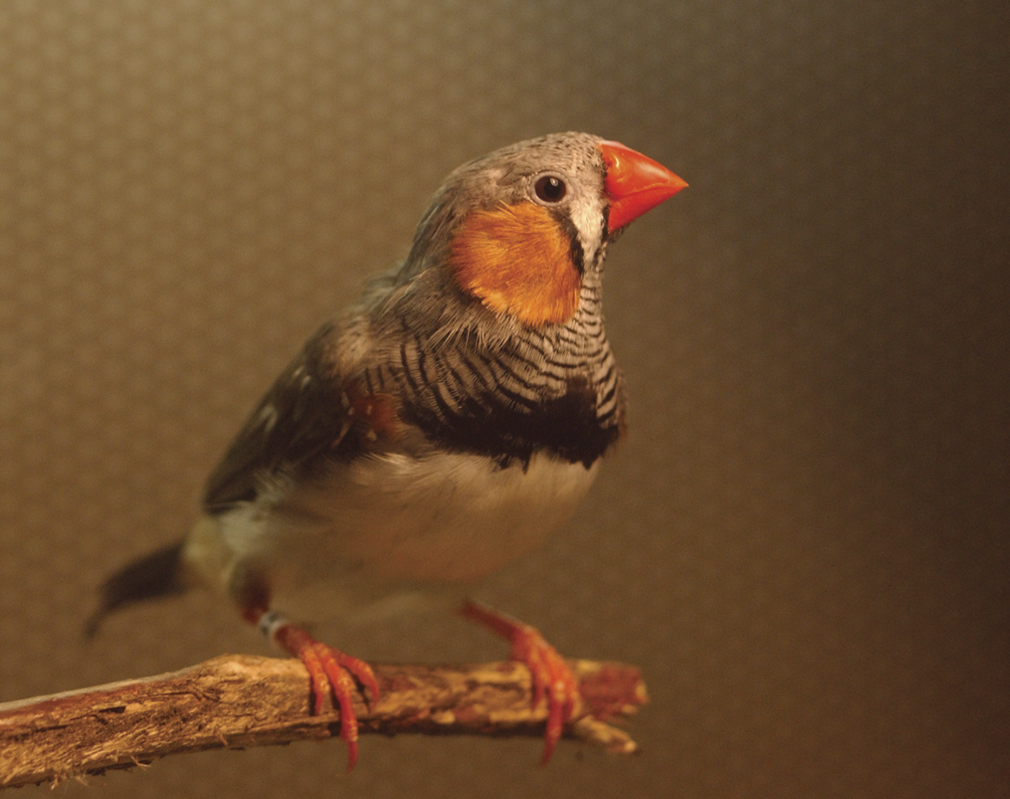

Baby birds’ babbling finally makes sense
Boston Globe | May 5, 2008
By Kelli Whitlock Burton
Male songbirds mark the arrival of courting season with a series of chirps and peeps strung together in a melody designed to impress potential mates. The serenade is perfectly executed – a far cry from the random babbling noises the birds make as babies.
New research from MIT suggests a specialized brain circuit is behind the birds’ early ramblings, and may also underlie the nonsensical noises made by their human counterparts.
Baby zebra finches learn to sing by listening to their fathers. About 30 to 45 days after hatching, the finches begin babbling a rapid stream of screechy tones. (Imagine a child shuffling across linoleum while wearing wet rubber-soled shoes.) The birds practice for hours every day until, at about 80 to 90 days old, they finally hit all the right notes. Now, the son’s song is an exact imitation of the father’s, a brisk, high-pitched riff repeated over and over. (Imagine an album playing on a stereo at 78 rotations per minute while skipping.)
When Michale Fee, a neuroscientist with the McGovern Institute for Brain Research at MIT, began studying how songbirds make their music, scientists had already identified two circuits in the brain. One pathway was used to learn the song and the other, known as the motor circuit, for performing the learned song. Researchers assumed that the motor circuit produced babbling in young songbirds, matured over time, and then produced the adult song.
To prove this widely accepted theory experimentally, Fee and graduate students Dmitriy Aronov and Aaron Andalman temporarily deactivated a part of the motor circuit in babbling young zebra finches. This should have left the birds mute. When the babbling continued, the team was befuddled.
The group then turned to the song-learning circuit. Deactivating a part of this pathway in very young birds silenced their babbling. But adults with a blocked pathway continued to sing.
“That learning circuit is not just there to program the motor pathway,” Fee says. “It’s actually making song in young birds.” And, he adds, when the birds age, the brain jumps tracks to the motor circuit. Though his studies were limited to finches – just one of 4,000 songbird species – Fee says that the circuitry is probably the same in other songbirds.
These findings go much further than illustrating the neural machinery behind bird song, says David Clayton, a neuroscientist at the University of Illinois at Urbana-Champaign who studies songbirds. The notion of overlapping neuronal pathways involved in the same function but activated at different stages of life is intriguing, he says. Especially when it’s noted that the learning circuit in songbirds is similar to pathways involved in motor skill development, such as movement, in mammals.
“This is arguably one of the few if not the best models for developmental sensory learning and it’s definitely the only model for developmental vocal learning,” said Clayton, who recently reported on a mechanism involved in short-term and long-term memory in songbirds. That research, published in Nature Neuroscience, is part of Clayton’s efforts to locate the place in the brain where very young birds store a template of their father’s song and figure out how the birds replicate the song perfectly, months later.
The work of Fee, Clayton, and others will get a boost this summer when the National Human Genome Research Initiative releases the finch genome. Clayton, a member of the executive committee that is overseeing the project, says publication of the genome will aid efforts to add the songbird to the list of model organisms used to study brain development.
“The clarity of how the brain controls behaviors is shown in sharp relief in songbirds,” he said.
